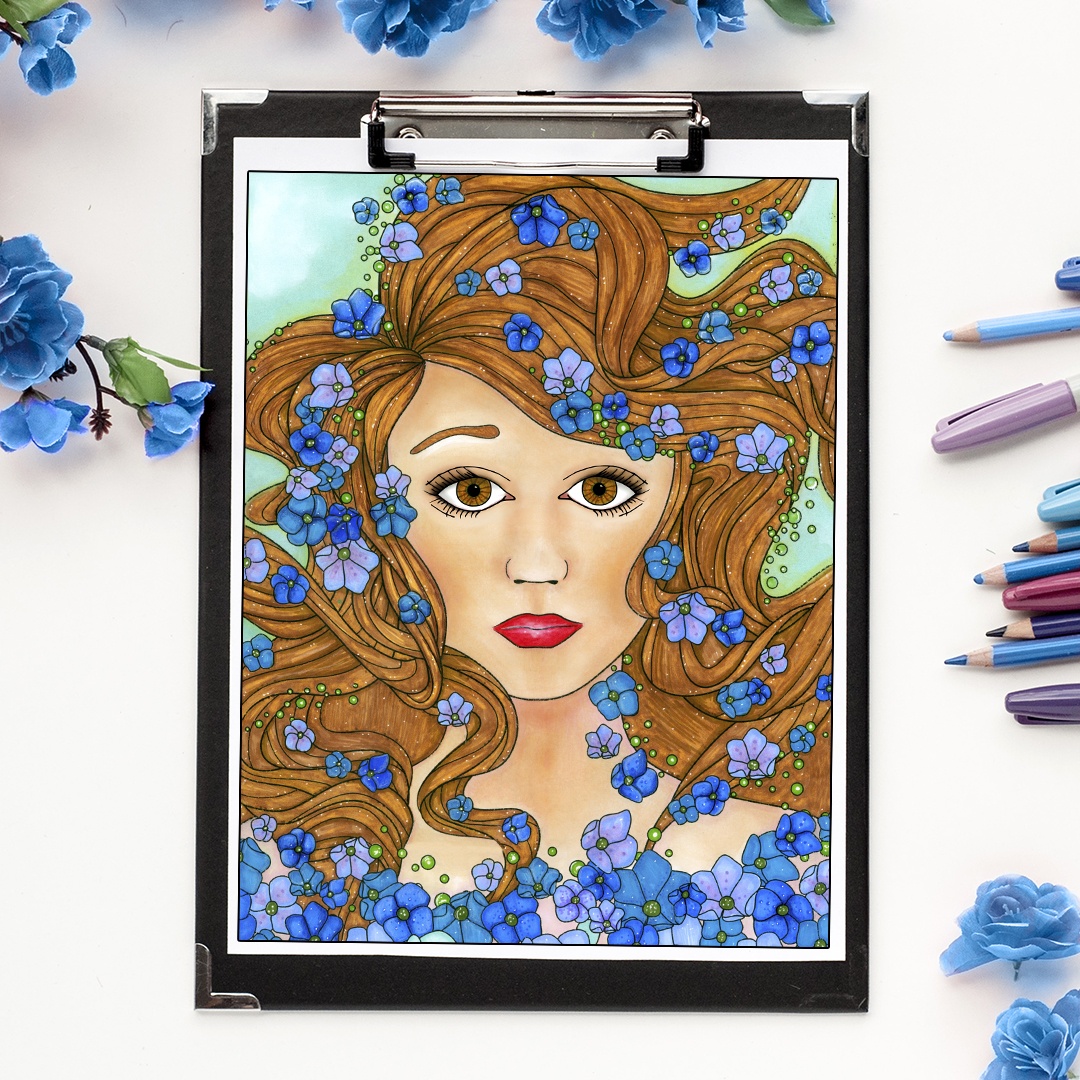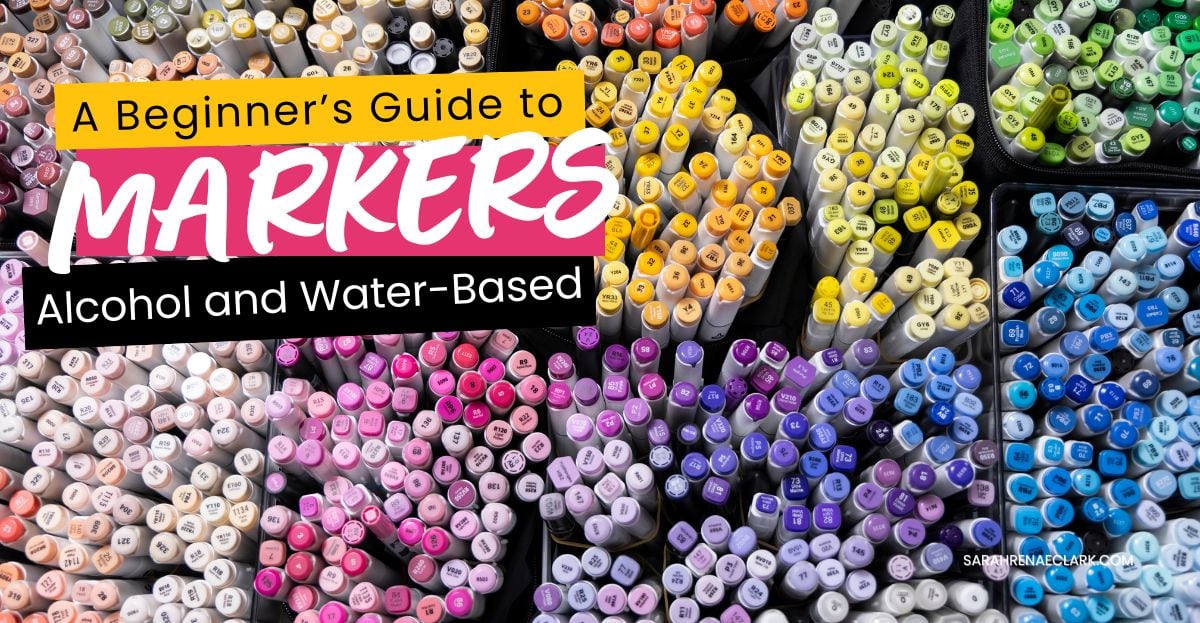This is Part Two of my three-part series on How to Color Skin Tones.
In Part One, I covered my top 5 tips for coloring skin. In this post, I’ll show you the first 5 videos on skin coloring techniques with colored pencils.
I’ve included my favorite tips from each video, the difficulty level and a list of the tools they have used so that you can find the video that will suit your coloring skill level and what you would like to learn.
To get the most of out this post, Pin it so you can use it as a reference and come back anytime.
Not interested in pencils? Feel free to skip ahead to Part Three: Skin Coloring Techniques with Markers
Disclaimer: This post contains affiliate links and I may earn a commission if you click them and make a purchase. This is at no cost to you and I only recommend products that I love.
Tutorial #1: How to color shade different skin tones with colored pencils
In this video, Emmy shows us 6 different skin tones and how she colors them. The video shows you which color is being used at each step during the process, so it’s easy to follow along. She provides a good description of layering and blending and explains the different pressures to use.
Difficulty level: Beginner
Tutorial length: 17 mins
Tools used: Faber-Castell Polychromos pencils
What I learned:
1. Use a circular motion and light to medium pressure.
2. Work in layers.
3. Use an eraser for extra highlights.
Tutorial #2: Colouring a face in Dagdrömmar
This advanced tutorial provides an amazing in-depth explanation of every step Peta uses to color in a realistic face from Hannah Karlzon’s Daydreams coloring book. This tutorial is different to others in that Peta uses a blue color as the base for her skin tone. While this tutorial is quite advanced, Peta explains it so well that it’s still worth a look for beginners.
Difficulty level: Intermediate to advanced
Tutorial length: 1hr 15 mins
Tools used: Faber-Castell Polychromos pencils (other brands mentioned)
What I learned:
1. Use blue shadows under skin tones to make the skin look more alive.
2. If you don’t the have exact colors, you can use similar colors from other brands.
3. Think about your light source before you begin
Tutorial #3: Drawing skin with Prismacolors
In this video, Kirsty shows us how to color two different skin tones with colored pencils. This video moves quite fast, but Kirsty talks us through each step and offers some great tips for working with colored pencils in layers.
Difficulty Level: Intermediate
Tutorial length: 18 mins
Tools used: Prismacolor portrait set
What I learned:
1. Start with a lot of light pressure layers and increase the pressure on your final layers.
2. Use circular motions.
3. Build up your layers in different colors for a more natural result.
Tutorial #4: How I color skin | Daydreams Coloring Book
This video doesn’t include any audio commentary, so it’s more of a “color-along” – but still a very good guide on coloring a face with pencils. The Prismacolor pencil color code is included in the bottom corner so you can understand how the layers are being done. The video has been sped up slightly, so you may need to pause and play if you are coloring along. The end result is amazing!
Difficulty Level: Advanced
Tutorial length: 40 mins
Tools used: Prismacolor Premier colored pencils and a white Uni-ball Signo Gel Pen (for highlights)
What I learned:
1. Work in lots of light layers.
2. Be patient! Great results take time.
Tutorial #5: How to draw skin – Basic tips with colored pencils
This video covers how to use colored pencils and a reference photo to produce amazing realistic results. The actual coloring process is sped up and is a little hard to follow for beginners, however there are some great tips included that apply to everyone.
Difficulty Level: Advanced
Tutorial length: 10 mins
Tools used: Derwent Artists pencils and Faber-Castell Polychromos pencils
What I learned:
1. Always keep a sharp point on your pencils.
2. Never use solvents to blend skin tones (it makes the skin shiny).
Now that we’ve covered pencil coloring techniques, it’s time to head to Part Three for my next 5 videos on skin coloring techniques with markers.
REMINDER: Pin this post so you can come back and watch these videos again at any time to improve your skills.
Previous post:
How to Color Skin Tones | Part One: General Tips for Coloring Skin
Up Next:
How to Color Skin Tones | Part Three: Skin Coloring Techniques with Markers











Great tutorials even here in September 2023! I have been following along as I have Prismacolor & Polychromos! Thank you!
Thank you, I look forward to seeing your information. Frank
hiii omg your vids are very helpful!!!tysm!
Hi! I have several Alena Lazareva grayscale coloring books. I struggled to color portraits in grayscale especially on thin paper. Ive tried prismacolor and polychrome pencils, both gave a blotchy appearance. I used very light pressure with layerings which didnt helped to create a smooth appearance. I had no trouble coloring other subjects such as flowers. Your expertise suggestion/advise would be greatly appreciated.
Jan
Hi Sarah I wonder if you can help me. I am deaf so videos don’t really work for me do you happen to have any written step by step with pictures instructions if not could you suggest where I might find something like that.
Regards
Mela Crane
Hi Mela! I don’t have any written instructions for this, but you might be able to find something on Google, or alternatively find something on Youtube with subtitles. My best advice for these videos is to watch a few and pay close attention to what they are doing – you’ll be surprised at how much you will be able to learn without hearing what they are saying, although some videos will be easier than others. Good luck!
I have seen part I & part II..both are Super Great ❗❗ I do have a few questions 1) in both, what weight paper were they each using & the quality of paper for their demos 2) in both, I thought I heard them say use circular strokes thru out the process but it did not appear they were using this technique but a few times, it seemed they were going in long strokes, light of course & I got the idea of many layers (if your paper can handle lots of layers) ..unfortunately some of the pages we have our there are thin & can only handle so much color on it..if you put too much, it looks cloudy & an over color to it So do we go with the flow of face or leg or arm, whatever we might be coloring that is flesh ???
I truly applaud these ladies, artist, for their time, talent, & enjoyment of coloring enough to share (some folks don’t )
Thanks to you as well for Pencil Stash Sarah Renee’ !! ❤❤❤
Great questions Cathie! I can’t speak on behalf of the artists from each video, but my thoughts are that a thicker paper would probably handle the layering more, however very light layers should be fine on thinner paper.
I think the circular motion is a starting guide – like you said, many of the videos don’t do this the whole time, they vary their stroke depending on the flow of the area they are coloring. I think it’s something you can develop more as you practice, but circular strokes are a starting point instead of coloring in straight lines.
I hope that helps and would love to hear how you go!